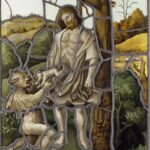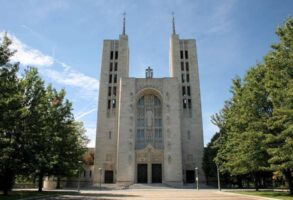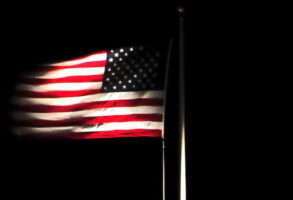
Published March 19, 2021
A week after a bizarre instruction banning early morning Masses at the side altars of the Papal Archbasilica of St. Peter in the Vatican was released (and subsequently posted on the door of the basilica’s sacristy), questions about the origins of this ukase, its irregularities of form, its curious recipients, its legality, and its intention remain – despite numerous inquiries to the Vatican Press Office and to the First Section of the Vatican Secretariat of State, on whose letterhead the decree was printed.
That silence suggests that the press office was blindsided by this summary action, and that there was no consultation about this matter with the relevant bodies in the Roman Curia, including the Congregation for Divine Worship. It also suggests that many who recognized that this unprecedented and abrupt action was unwarranted (not to mention illegal according to Canon Law) were afraid to protest the decree, even privately. Those knowledgeable about the present tremulous atmosphere inside the Vatican will likely draw the appropriate conclusion regarding the provenance and nature of this authoritarian diktat.
For over thirty years, I have found early morning Mass at one of the side altars of St. Peter’s one of the joys of Roman life. Whether I was simply assisting a priest friend celebrating the Mass at my request, or participating at Mass with a small group of friends or family, the experience was always prayerful and always reverent. Moreover, early morning Mass at St. Peter’s was a profound experience of the universality of the Church as the sacramentally constituted Mystical Body of Christ. For at the other side altars the Holy Sacrifice was being offered in many other languages, with pilgrims from all over the world.
Just as impressively, the basilica was a genuine house of prayer in those hours between 7 and 9 a.m. This was in sharpest contrast to the bustling, often chaotic, museum-like atmosphere in St. Peter’s from the time early morning Masses were completed until the basilica closed for the evening. I begrudge no one their admiration for Bramante’s original design of “New St. Peter’s,” or for Michelangelo’s genius in altering Bramante’s plans by including a much larger dome, or for the beauty of Bernini’s masterful decorative scheme, which took fifty-seven years to complete. Yet during tourist hours, St. Peter’s is just that—a tourist site—full of chatter and iPhone cameras, despite the quiet serenity of its Blessed Sacrament Chapel. There is no decorum; the only time of decorum I ever experienced in Catholicism’s most recognizable space was when those early morning Masses were being celebrated at the basilica’s 45 side altars and 11 chapels.
That quiet and reflective period was also a time of hospitality—like decorum, another rare commodity in the great basilicas of Rome, many of whose custodians are not the most hospitable. Yet in St. Peter’s at 7 or 7:30 a.m., the sacristy staff could not have been more gracious in welcoming priests who hailed from many countries. In my experience of waiting for my priest-friends to vest, things were orderly in the sacristy and the young altar boys who accompanied the celebrant (and his group, if he had one) to one or another of the side altars were efficient and well-behaved.
Thus the claim of the March 12 decree, that it was being issued to foster a more prayerful and decorous atmosphere in the basilica, is nonsense. By dictating that virtually all early morning Masses be concelebrated, and by virtually guaranteeing that those concelebrations will be in Italian, the diktat violates both universality and hospitality while ensuring a more jumbled, less reverent atmosphere at the altars where these Masses will be celebrated—not least under pandemic conditions of social-distancing and so forth.
And why the de facto restriction to one language, which is not the universal language of the Church? What kind of welcome does that represent to the 99.2% of the world’s population for whom Italian is not a first language? I am perfectly capable of participating in the Mass in Italian, and I do so regularly and happily when I attend Mass in other Roman churches. But why is Italian being imposed on the entire world Church if it wishes to participate in Mass in St. Peter’s early in the morning?
The form of the March 12th decree was so odd as to raise immediate questions about its authenticity. It was not signed, but only initialed by Archbishop Edgar Peña Parra, the head of the Secretariat of State’s First Section. But why was this diktat issued by the First Section (the Section for “Ordinary Affairs”) of the Segretario di Stato, which has no competence over liturgical celebrations in St. Peter’s – or anywhere else for that matter? (One wag started speculating about “Deep Stato;” be that as it may, a decree of this sort coming from the First Section was entirely irregular.) Will the First Section will now pass judgment on indulgences? Or liturgical vestments? Or anything else on which it is told to pronounce?
The fact that the decree carried no protocol number, considered essential in any official and authorized communication, was also puzzling. Did this simply represent incompetence in the First Section (not unknown these days, by many accounts)? Or did it suggest that the decree was a fake? No one believes that now. But in any case an official document from the Secretariat of State without a protocol number was entirely irregular.
The addressees of the decree were also mysterious, suggesting again that this was an arbitrary decision, not very well thought through. The new Archpriest of St. Peter’s, Cardinal Mauro Gambetti, O.F.M.Conv., was not on the list of those to whom the diktat was issued. Why not? Why did the list of addressees include the head of the Commissariat for the Fabric of St. Peter’s (typically occupied with maintenance and repairs), the basilica’s Chapter of Canons (a largely ceremonial body), and the Office of Liturgical Celebrations of the Basilica (which makes some sense, at least), but not the responsible party, the Archpriest?
Moreover, the decree misused technical language—another indication of a First Section in shambles, perhaps, but one that certainly raised eyebrows and questions. In limiting celebrations of the Extraordinary Form of the Mass to one place in the basilica, the small Clementine Chapel in the Vatican grottoes, the ukase used the term rito straordinario [extraordinary rite], which is not only wrong but contradicts Pope Benedict XVI’s insistence that there is only one Roman Rite, which has two “forms” – Ordinary and Extraordinary.
Limiting the celebration of the Extraordinary Form to a small number of time slots in a small underground chapel also effectively ghettoizes those who believe that they pray better in that way; and while I do not count myself among their number, I cannot see why their preference should be treated as if it were some sort of contagious disease. The decree also referred to a lector and a cantor “animating” the permitted concelebrations, which is, to put it gently, a curious formulation, suggesting as it does that a Mass celebrated without a lector or cantor is somehow “unanimated.” This weird usage also violates the teaching of Second Vatican Council’s Constitution on the Sacred Liturgy, which at #7 insists that it is Christ himself who enlivens the Church’s worship.
The decree also seemed to run roughshod over Church law (not necessarily an innovation in a pontificate whose agreement with the People’s Republic of China on the appointment of bishops violates Canon 377.5 of the Code of Canon law). By imposing concelebration as the norm in the basilica early in the morning, the decree would seem to violate at least the spirit of Canon 902, which affirms that every priest is “fully entitled to celebrate the Eucharist individually.” Then there is the restriction on the use of the Extraordinary Form to “authorized priests,” which violates the provisions of Benedict XVI’s 2007 Motu Proprio, Summorum Pontificum, which grants permission to use the Extraordinary Rite to every priest.
The usual defenders of the present pontificate tried to mount the usual defenses, suggesting that this was an effort to promote the “spirit of the liturgical renewal introduced by the Second Vatican Council” (as Gerard O’Connell put it in America). One does wonder when these people will cease speaking of some amorphous conciliar “spirit” as an all-purpose justification for anything they wish to justify. Still, how does one square a ban on individual and small-group Masses at the side altars of St. Peter’s with the papal “populism” so celebrated by those same defenders? There was nothing populist about this ukase—a term I use deliberately, as what was done on March 12th more resembled the diktat of an autocratic Russian czar than the carefully pondered decision of a “synodal” Church.
But perhaps, these days, some of the people of the Church are less equal than others, rather like in the latter pages of Orwell’s Animal Farm.
As for Vatican II, this decision to ghettoize the Extraordinary Form of the Roman Rite in the Clementine Chapel will only harden the conviction of some that the council’s liturgical renewal was not just poorly implemented but was in fact a terrible mistake. I do not share that view at all. But I can readily imagine what some will make of this latest effort to impose on the Church a form of the Holy Mass in which some find it difficult to pray.
Bishops, priests, and lay Catholics who have benefited spiritually from early morning Mass at the side altars of St. Peter’s should make their distress at this cruel and very unusual decree known to the Holy Father, either directly by letter to him or by writing their local Nuncio or Apostolic Delegate. It might also be helpful if those curial cardinals I have seen regularly celebrating early morning Mass in St. Peter’s, often with the assistance of an altar boy only, would make their unhappiness known to Pope Francis. As those cardinals include men close to the Pope, like papal almoner Konrad Krajewski, that might make some difference.
As of March 22nd, when this ukase goes into effect, St. Peter’s will be much less a house of prayer than it used to be. That is a great sadness, especially at a time when the Church and the world badly need the power of the Eucharist and the witness of intense Eucharistic piety.
George Weigel is Distinguished Senior Fellow of Washington’s Ethics and Public Policy Center, where he holds the William E. Simon Chair in Catholic Studies.








